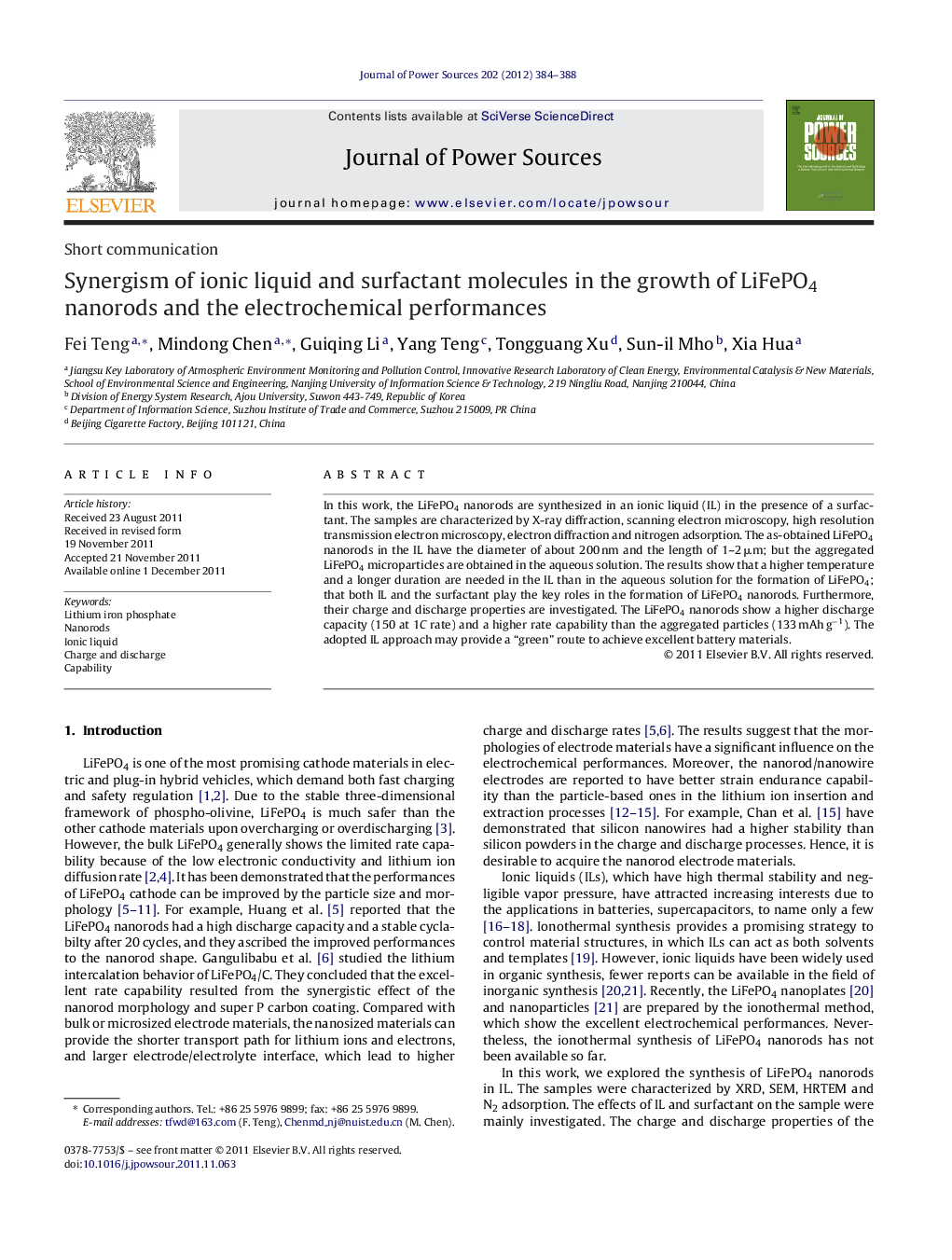| Article ID | Journal | Published Year | Pages | File Type |
|---|---|---|---|---|
| 1288586 | Journal of Power Sources | 2012 | 5 Pages |
In this work, the LiFePO4 nanorods are synthesized in an ionic liquid (IL) in the presence of a surfactant. The samples are characterized by X-ray diffraction, scanning electron microscopy, high resolution transmission electron microscopy, electron diffraction and nitrogen adsorption. The as-obtained LiFePO4 nanorods in the IL have the diameter of about 200 nm and the length of 1–2 μm; but the aggregated LiFePO4 microparticles are obtained in the aqueous solution. The results show that a higher temperature and a longer duration are needed in the IL than in the aqueous solution for the formation of LiFePO4; that both IL and the surfactant play the key roles in the formation of LiFePO4 nanorods. Furthermore, their charge and discharge properties are investigated. The LiFePO4 nanorods show a higher discharge capacity (150 at 1C rate) and a higher rate capability than the aggregated particles (133 mAh g−1). The adopted IL approach may provide a “green” route to achieve excellent battery materials.
Graphical abstractLiFePO4 nanorods were obtained in IL in the presence of an anionic surfactant, which shows a higher discharging capacity than the microparticles obtained in an aqueous medium.Figure optionsDownload full-size imageDownload as PowerPoint slideHighlights► The LiFePO4 nanorods of 200 nm × 1 μm are obtained by ionothermal synthesis in the presence of an anionic surfactant. ► The nanorods preferentially grow along the {0 2 0} direction. ► The LiFePO4 nanorods exhibit a higher discharge capacity than the irregular microparticles obtained in an aqueous solution.
